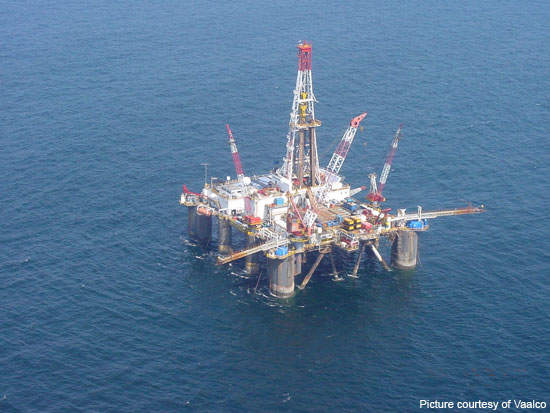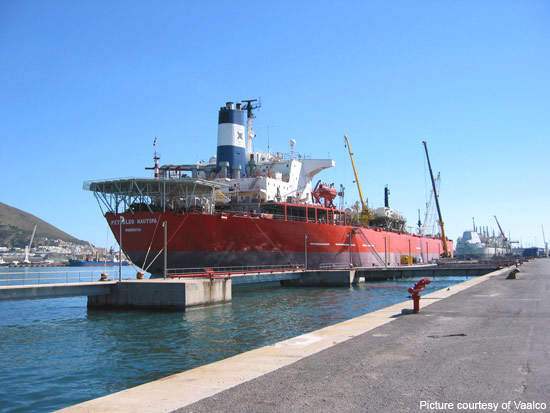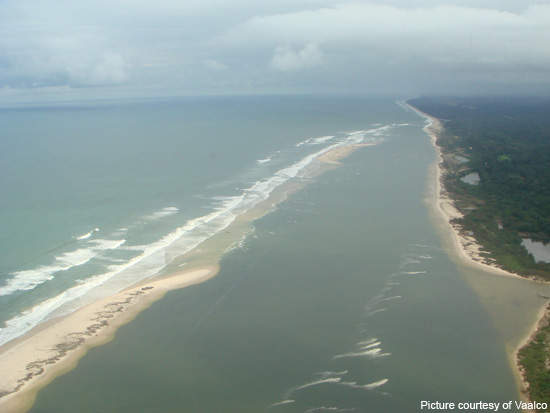The Etame offshore field was discovered in 1998 by Vaalco Energy. It began commercial production in 2001 after three delineation wells were drilled. The field consists of four subsea wells operating from the Gamba reservoir. A fifth well is expected to be added in 2010.
The Etame field is part of the larger Etame Marin concession. The concession also includes Avouma and South Tchibala fields and the Ebouri field, which are located approximately ten miles south-east and seven miles north-west respectively of the Etame Field.
The field is owned by a consortium led by Vaalco Energy (28.07%). The consortium also includes PanAfrican Energy Gabon Corporation (31.36%), Sasol Petroleum West Africa (27.75%), Sojitz Etame Limited (2.98%), PetroEnergy Resources Corporation (2.34%) and Energy Africa Gabon (7.5%).
The government of Gabon awarded a 19-square-mile exploitation area around the Etame field to the consortium in November 2001. The term of the exploitation area will end in 2021.
Etame field geology
The Etame field lies within the Etame block, which occupies 3,074km2 in the northern section of the Congo Basin offshore southern Gabon. The Congo Basin was created due to rifting and the resultant drifting of the African continent from South America. It is characterised by syn-rift sediments, Aptian salt deposit and drift-sag sediments.
The syn-rift sediments and structures of the basin are overlain by a series of Aptian salt deposits. The salt deposit is further underlain by drift-sag sediments that have been structured by salt tectonics that occurred during the post-Albian age. The dominant salt features are partially parallel salt walls that measure between 10km and 15km.
The Gamba sandstone is a fine to medium-grained sandstone with an average thickness of 45ft. The sandstone is unusually unconsolidated, highly porous and belongs to the Cretaceous age. It lies over a major angular unconformity that overlies Dentale-aged subcropping sandstones and interbedded shales. Approximately 170ft of oil columns extend from below the unconformity.
Etame field oil reserves
As of 2008, the field consists of approximately 23 million barrels of proven and probable oil reserves. The reserves increased by 23% in comparison with those in 2007.
Etame field development
The Etame field was developed at a cost of $117.3m. Four subsea wells were connected using flexible flowlines to a contracted floating production, storage and offloading vessel (FPSO). The first well of the Etame field was drilled in January 1998. It tested more than 3,500 barrels of oil per day (bopd) from a 13m interval in the Gamba formation.
The second well in the Etame field was drilled in January 1999. Although the drilling was successful, the project was delayed as the need for improved seismic resolution under the salt walls and a better velocity model to outline the low-relief drape structure that determines the field was enforced.
A re-evaluation programme, including pre-stack depth-migration processing, was carried out on the 3D survey in 1999. Following this, in 2001, two appraisal wells – Etame Field 3 and Etame Field 4 – were successfully drilled horizontally around 1,300ft through the reservoir. Etame Field 3 and Etame Field 4 tested 7,600bopd and 9,800bopd respectively.
Etame oil field infrastructure
The wells were drilled using open hole horizontal gravel packs (OHGPs) that exhibit superior performance in sand-control. The wells were connected using a Petroleo Nautipa FPSO, which has storage capacity of up to 1.1 million bpd. It has a dead weight of 138,580t and length overall (LOA) of 266m. The FPSO is equipped with a gas-fired deck boiler, an eight-point spread mooring and heating coils inside the tanks. The annual throughput of the FPSO is six million barrels.
The FPSO vessel reached the field location on 28 August 2002 and was anchored at a depth of 250ft below water.
To pump oil from the wells to the FPSO, approximately six miles of flow lines were placed on the ocean bed. A lay barge vessel, Seamac III, was used to connect the flowlines between the wells and the storage vessel.
The Seamac III also laid down separate umbilical lines that contained hydraulic lines, allowing the FPSO to control the wells. Oil is offloaded from the FPSO through shuttle tankers that deliver oil to the refineries every 30-45 days.
Oil field production
The field started production in September 2002. The average production reached 21,350bopd in 2008.










